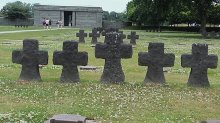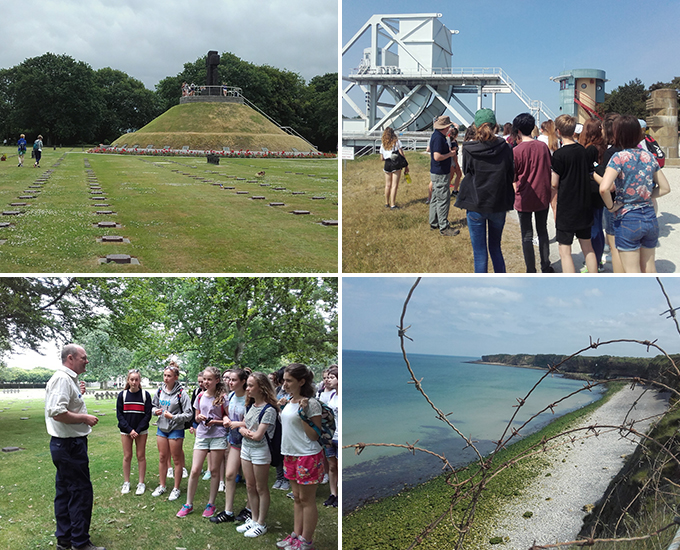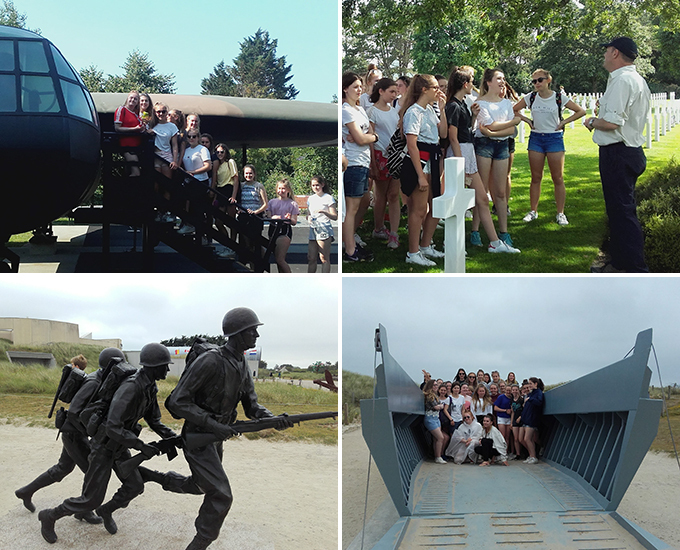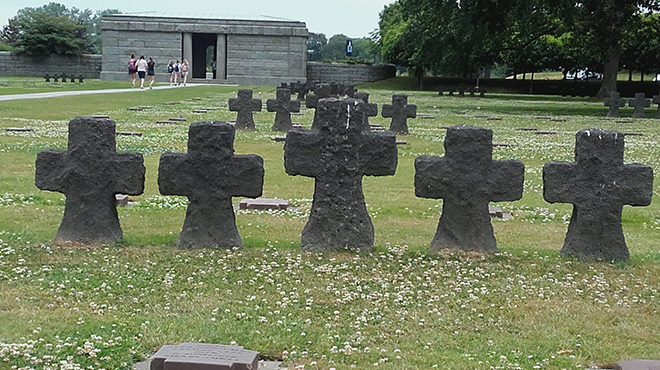
Year 9 History students have recently returned from a hugely informative and engaging three-day study tour to Normandy in order to support their study of World War Two. The trip had a particular focus on the D-Day landings and, along with their tour guide, the group spent time exploring a number of historical sites to help their understanding of the events of D-Day itself. They also considered the significance of the impact of D-Day and the circumstances which led to the development of the USA as a superpower and the decline of Germany.
Day One of the trip focused on the British Airborne mission to take Pegasus Bridge. This successful operation was one of military history’s finest examples of success based on simplicity and surprise. The two bridges were captured in 15 minutes by airborne troops of the Ox & Bucks Light Infantry, landing by gliders (which essentially crash landed), which then had to be held until relieved by Lord Lovat’s Commandoes, 13 hours later. The group also visited Pegasus Bridge Museum which had an excellent array of artefacts, including a replica glider and the original bridge.

Day Two of the trip saw the group visiting the American landing beaches of Utah and Omaha, as well as the American cemetery. They also visited the German cemetery which led the girls and staff to reflect on the different methods and messages of the types of commemoration chosen. The girls began the day by learning about the American paratroopers tasked to prepare the ground for the invading US troops. This meant a trip to St Mere-Eglise, a town that would prove vital for the success in opening up routes for the US troops coming off Utah beach. The next stop, further down the coast was Arromanches, the site of the British constructed Mulberry Harbour. The unique floating Mulberry Harbours ensured the delivery of combat supplies to the expanding bridgehead. They were a key factor in both enabling the strategic intent and servicing the tactical battle. Their creation also aided the German belief that the Normandy invasion was a decoy for the real attack on Western Europe, as no major port had been assaulted.
On Day Three the group went to one of the British landing sites – Sword Beach - as well as the British Cemetery. At Sword Beach, they learnt about all three British/Commonwealth landings (the ones at Gold and Juno too). The final stop was the British cemetery at Ranville where the girls laid a wreath to remember the soldiers who had fought at D-Day and spent some time reflecting on everything they had seen during their time in the area.






























